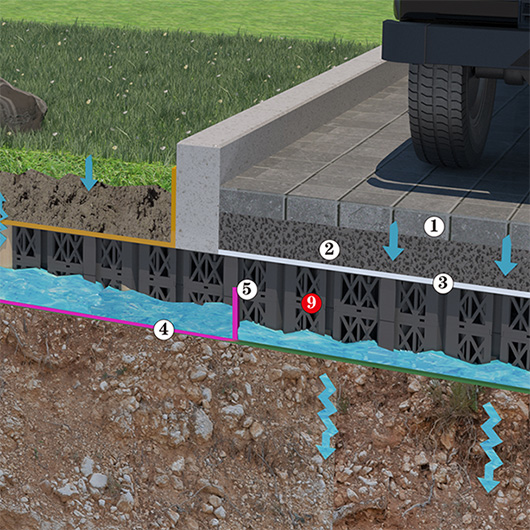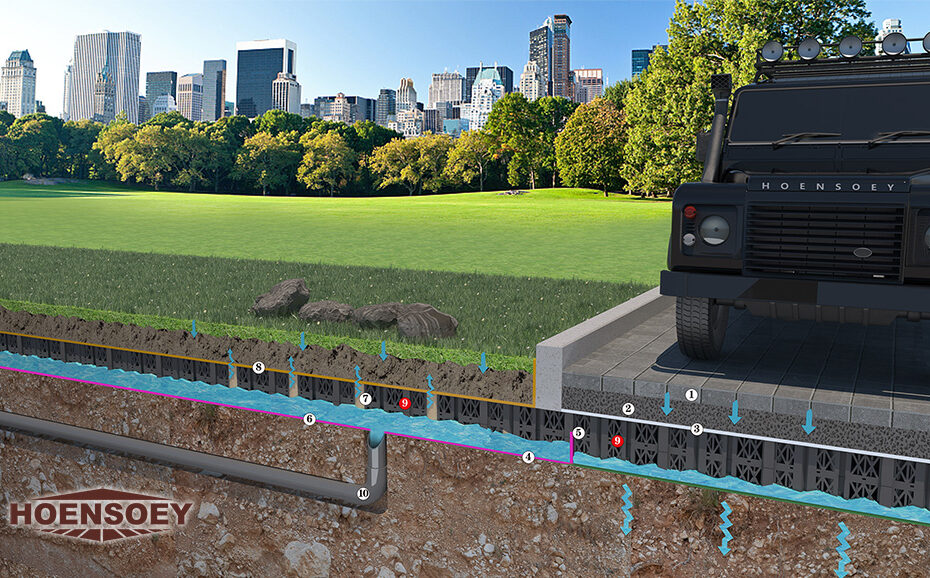Introduction: Building Sustainable Urban Drainage Systems: Safeguarding and Recycling Water Resources
As cities continue to grow and face the challenges of climate change and urbanization, the importance of sustainable urban drainage systems becomes increasingly evident. These systems play a crucial role in managing stormwater, preventing flooding, and protecting water resources. One innovative solution that contributes to the sustainability of these systems is the implementation of HOENSOEY CELLS. These advanced modules provide numerous benefits in terms of water management, conservation, and environmental protection.
Water Resource Protection:
HOENSOEY CELLS are designed to effectively manage stormwater runoff by promoting infiltration and retention. By capturing rainwater and allowing it to infiltrate into the ground, these cells reduce the burden on traditional drainage systems and protect natural water bodies from pollution caused by excessive runoff. The cells act as a sustainable drainage solution that helps maintain the quality and quantity of water resources in urban areas.
Recycling and Reuse:
An important aspect of sustainable urban drainage systems is the recycling and reuse of water. HOENSOEY CELLS facilitate water recycling by storing excess stormwater for later use. This stored water can be utilized for various purposes such as landscape irrigation, toilet flushing, or industrial processes. By incorporating these cells into the drainage system, cities can reduce their dependence on freshwater sources, alleviate the strain on water supplies, and promote efficient water management practices.
Flood Prevention and Resilience:
HOENSOEY CELLS contribute to the resilience of urban areas by effectively managing stormwater during heavy rainfall events. The cells provide temporary storage for excess runoff, preventing overwhelming volumes of water from inundating the drainage infrastructure and causing flooding. By mitigating the risk of flooding, these cells help protect both the built environment and the surrounding ecosystems, fostering a safer and more resilient urban landscape.
Environmental Benefits:
The use of HOENSOEY CELLS in sustainable urban drainage systems brings about significant environmental benefits. These cells promote biodiversity by creating green spaces that support the growth of vegetation and provide habitat for various species. Additionally, the infiltration of stormwater through the cells helps recharge groundwater, maintaining the water balance in urban areas and supporting the health of ecosystems.
Conclusion:
Building sustainable urban drainage systems is a crucial step towards safeguarding and recycling water resources in cities. The incorporation of HOENSOEY CELLS into these systems offers numerous advantages, including water resource protection, recycling and reuse, flood prevention, and environmental benefits. By embracing these innovative solutions, cities can effectively manage stormwater, reduce their environmental impact, and create more resilient and sustainable urban environments. It is imperative that we continue to prioritize the implementation of sustainable drainage systems, such as those incorporating HOENSOEY CELLS, to ensure the long-term well-being of our cities and the preservation of precious water resources.

